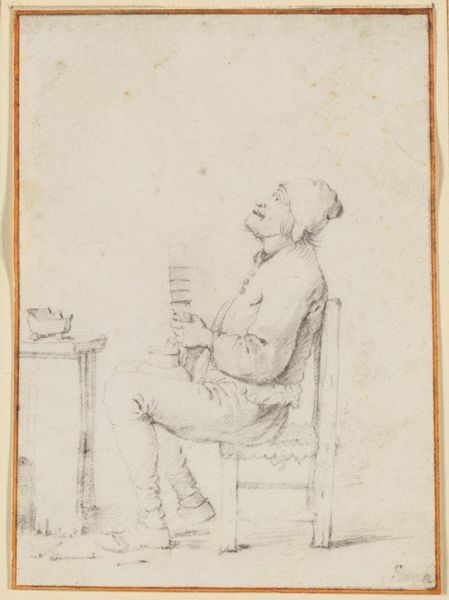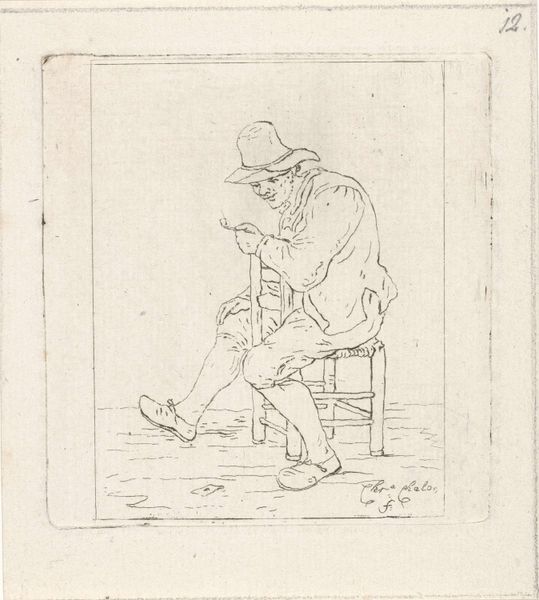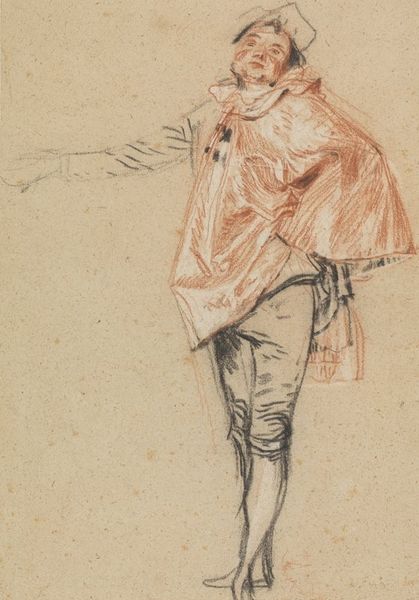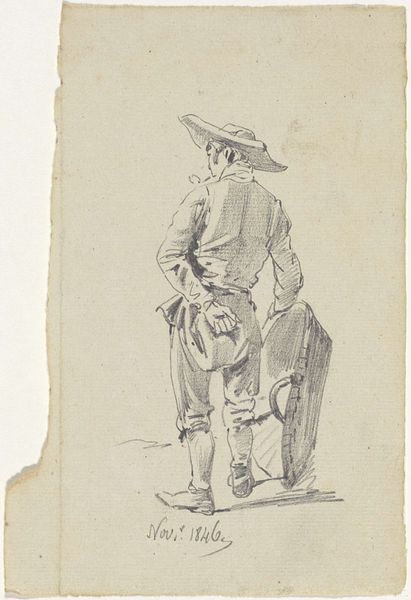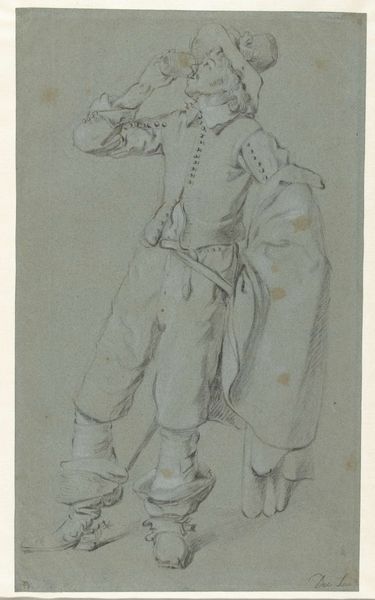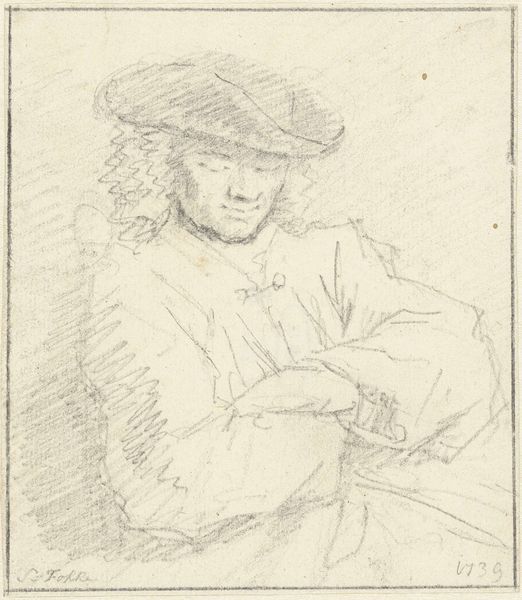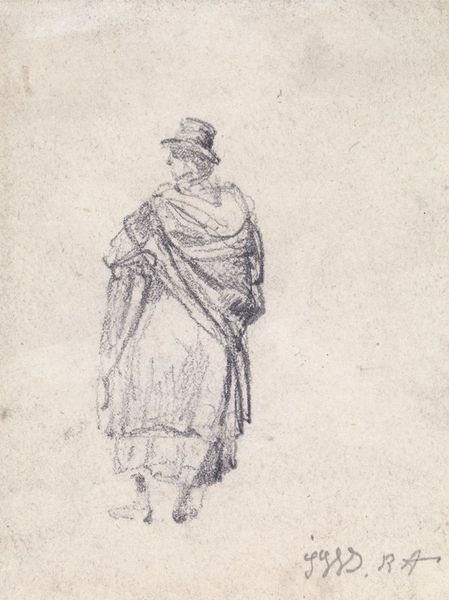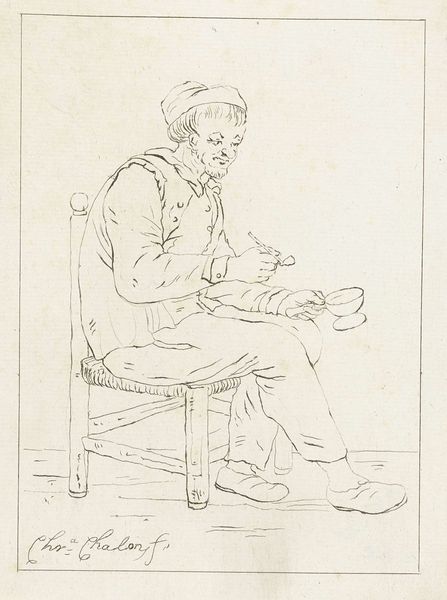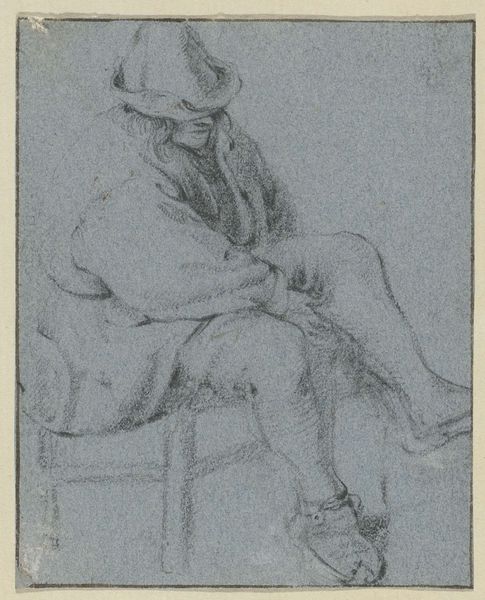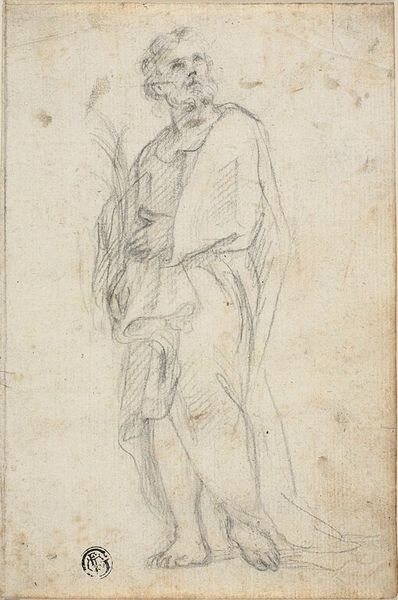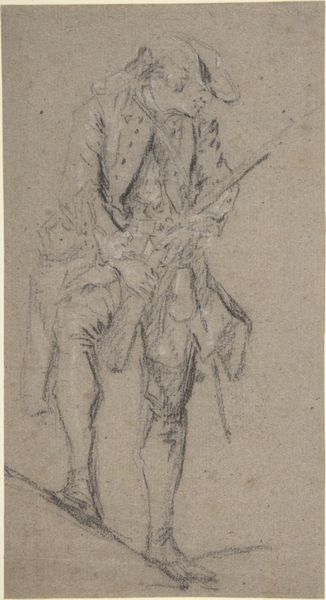
drawing, pencil
#
portrait
#
drawing
#
figuration
#
pencil
Copyright: Public Domain: Artvee
Curator: James Ward's pencil drawing, titled "A Boy Leaning Against a Table," immediately evokes a sense of quiet contemplation. The sketched lines create a sense of vulnerability in the boy’s stance and face. Editor: It's true; he looks burdened. I feel a starkness that speaks to the realities faced by youth in his time, the lack of privilege or even protection. His head is lowered, his stance defeated. There is a definite pathos in that slight, slumped posture. Curator: Considering the period in which Ward was active, one can understand such concerns. He moved within circles examining public and private morality, especially during eras of industrial expansion where images of rural life often were leveraged as allegories of cultural health. Editor: Exactly! And we must consider how the very act of depicting this boy, perhaps from a working-class background, could be interpreted. Is this about honoring him, or simply turning his struggle into a commodity? Even sketches of everyday subjects often carried coded political messages. Curator: The simplicity of the medium, the starkness of the pencil against the page, heightens this interpretation. It creates a realism that isn’t glorified through idealized beauty, instead showing a kind of truth, which can act as its own commentary on a society grappling with inequalities. Editor: You’re right to note the impact of pencil as his chosen material. And let’s think about accessibility. Drawing made art more available; the boy, as subject, is mirrored by the availability of the artwork depicting him. Ward shows his understanding of how power imbalances were reflected even in the creation and dissemination of art. Curator: It really does make you ponder the weight of representation and how our viewing position impacts the narrative we construct. Ward seems aware of this himself. Editor: Definitely, a thoughtful glimpse into the past, offering perspectives that resonate even now when we confront similar societal issues.
Comments
No comments
Be the first to comment and join the conversation on the ultimate creative platform.
